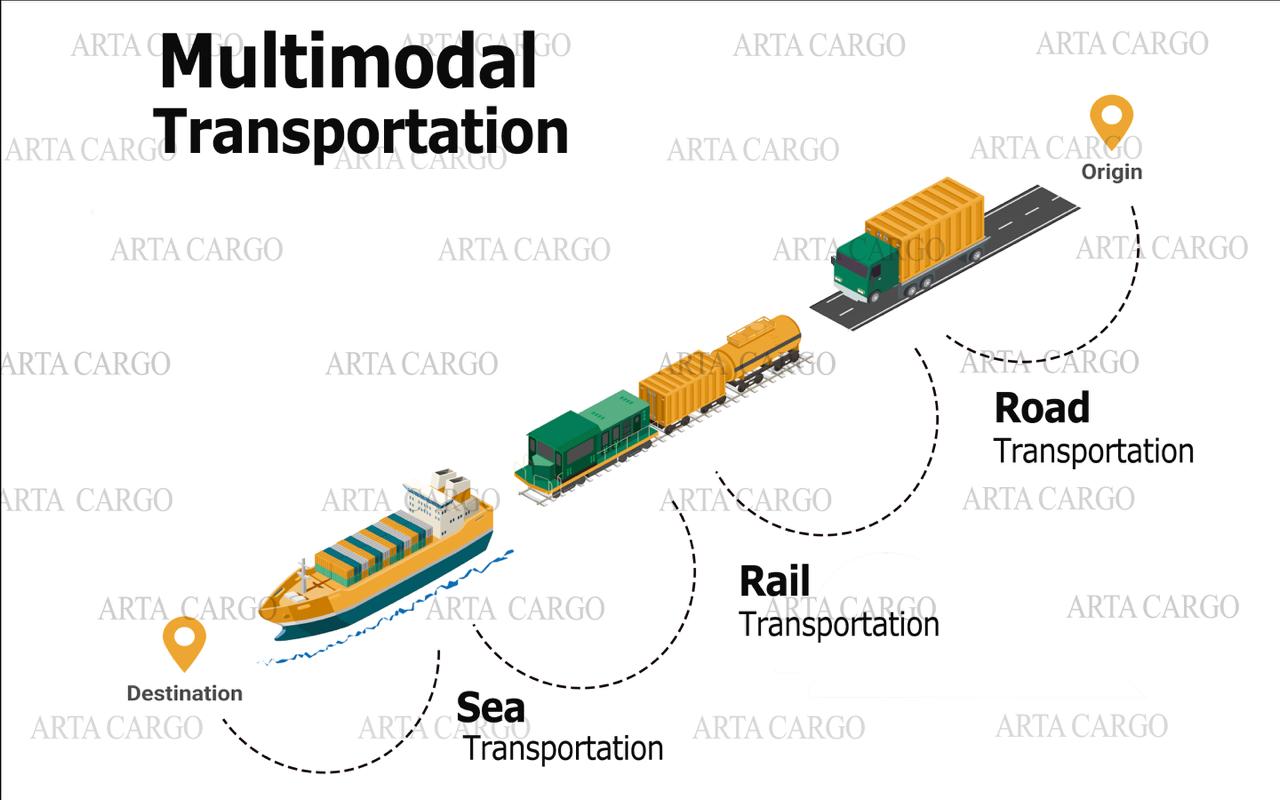When several modes of transportation are used for a single trip or shipment, it is referred to as multimodal transportation.
It entails mixing several modes—such as air, sea, road, and rail—in order to maximize effectiveness and satisfy the unique logistics needs of a given consignment.

The transportation company of the contracting party is in charge of carrying out all operations from point A to point Z in this type of transportation method, even though different methods are used to transport and transfer cargo. This means that a company is primarily responsible for the cargo transfer process.
It's a kind of multimodal transportation.
With this method, moving items from one place to another is made easy while maximizing the benefits of each mode and reducing the disadvantages of each one separately.
Multimodal transportation improves the flexibility, effectiveness, and dependability of the transportation process by combining many modes of transportation.
Every kind of transportation works in concert with the others to help overcome obstacles like time, money, geography, and distance.
Customers can leave their goods to logistics companies and it is not needed to be worry about shipping because these companies offer services like stripping cargo from containers into wagons or trucks, collecting D/O, handling customs formalities, and even warehousing goods.
By combining multiple modes of transportation, multimodal logistics providers can leverage the strengths of different modes to create an integrated and cost-effective transportation solution.
For example, using road transportation for short-distance movement to reach a rail station, where cargo is then loaded onto a wagon for long-haul transport. This integration of various modes provides a more efficient and sustainable transportation option compared to relying solely on one mode of transport.
Multimodal transportation uses different modes of transportation that are all coordinated under a single transportation company.
This method helps to eliminate other intermediaries related to coordination and other shipping methods that are outsourced every time. As a result, shippers can save time, money, labor and other resources.
Global supply chains depend heavily on multimodal transportation since it makes it easier for goods to move across different nations and regions. Benefits include better connectivity, shorter transit times, less transportation charges, and more adaptability to shifting market demands.
Businesses can improve their logistics operations and better satisfy customer expectations by combining several methods of transportation.
To sum up, multimodal transportation is a flexible and successful method of managing logistics that combines the advantages of several forms of transportation to build an effective supply chain network. Businesses can increase operational efficiency, save costs, and promote sustainability in their transportation operations by integrating various modes of transportation and making the most of their use.
Cargo multimodal transportation involves the seamless movement of goods using multiple modes of transportation within a single supply chain journey. This approach allows cargo to be transported efficiently and cost-effectively by combining different modes such as road, rail, air, and sea transport. Cargo may transition between these modes at designated transfer points, ensuring continuous movement towards the final destination.
In cargo multimodal transportation, logistics providers coordinate the different modes of transportation to optimize the entire shipment process. This may involve using trucks for initial pickup and delivery, transferring cargo to a rail or sea container for long-distance transport, and potentially utilizing air freight for expedited shipments. By leveraging the strengths of each transportation mode, cargo can be transported more effectively, overcoming challenges such as distance or time constraints.
Additionally, cargo multimodal transportation contributes to sustainable logistics practices by promoting the use of more environmentally friendly transportation modes and routes .Cargo can be transported with fewer carbon emissions and a less environmental effect by selecting the most energy-efficient means of transportation for each leg of the trip. This is consistent with supply chain management and logistics operations' increasing emphasis on sustainability.
All things considered, cargo multimodal transportation is a calculated strategy that provides companies with a complete and integrated answer for effectively transporting goods between various modes of transportation. Businesses may optimize their supply chains, increase operational efficiency, lower costs, and improve sustainability in their cargo transportation operations by utilizing the advantages of road, rail, air, and marine transportation.


